There are various places to visit in Split, each offering a distinct experience. This destination combines history with a lively atmosphere, making it an interesting place to explore. Streets open into spacious areas where the past and present come together, while the coastline offers a different view of the surroundings. Visitors can explore historic sites, experience local culture, or take in the atmosphere steadily. The energy shifts throughout the day, from peaceful moments to a more vibrant feel. With different sights and activities, there is always something to see and do in Split, combining tradition with modern life.
10 Places To Visit In Split
Here is a list of the best places to visit in Split, Croatia, that will make your trip memorable.
1. Diocletian’s Palace
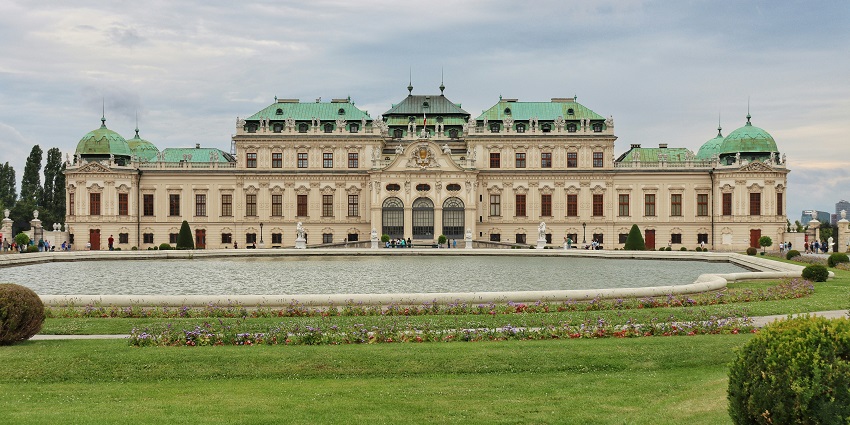
Photo: Martin Zenker / Unspalsh / Image For Representation Only
Diocletian’s Palace, a UNESCO World Heritage site, is a major tourist attraction in Split. It was built in the 4th century for Emperor Diocletian and remains one of the best-preserved Roman structures. The palace forms the heart of Split’s Old Town, featuring ancient walls, gates, and underground chambers. Visitors can walk through its narrow streets, where historic architecture blends modern shops, cafes, and homes. Key highlights include the Peristyle, the palace substructures, and the original Roman columns. The site directly links to Roman history while remaining a vibrant part of the city.
Location: Dioklecijanova ul. 1, 21000 Split, Croatia
Ideal Trip Duration: 2 – 3 hours
2. Cathedral Of Saint Domnius
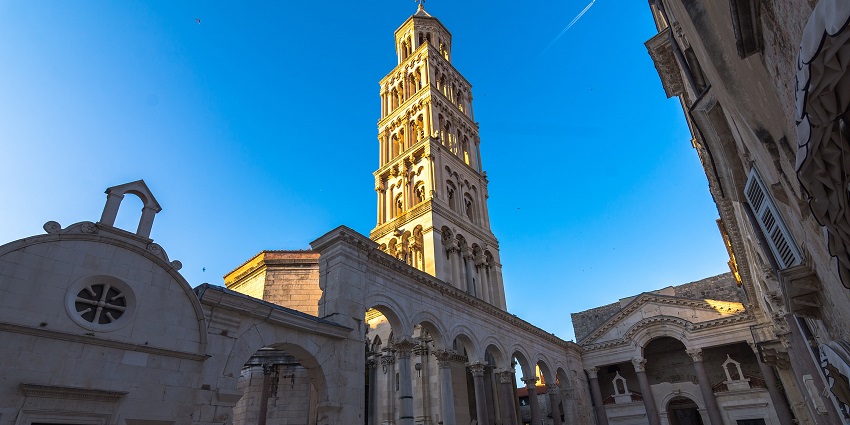
Photo: Mattias Hill / Wikimedia Commons
The Cathedral of Saint Domnius is one of the best places in Split, originally constructed as Emperor Diocletian’s mausoleum in the 4th century. It is one of the oldest Catholic cathedrals still in use in its original form. The structure blends Roman, Byzantine, and medieval influences, reflecting the city’s long history. Its octagonal design and preserved Roman carvings highlight its imperial origins. Visitors can see detailed wooden choir stalls, ancient stonework, and religious relics. With its rich history and striking design, the cathedral remains an important cultural and religious site in the city’s heart.
Location: Kraj Sv. Duje 5, 21000 Split, Croatia
Ideal Trip Duration: 1 – 2 hours
3. Riva Promenade
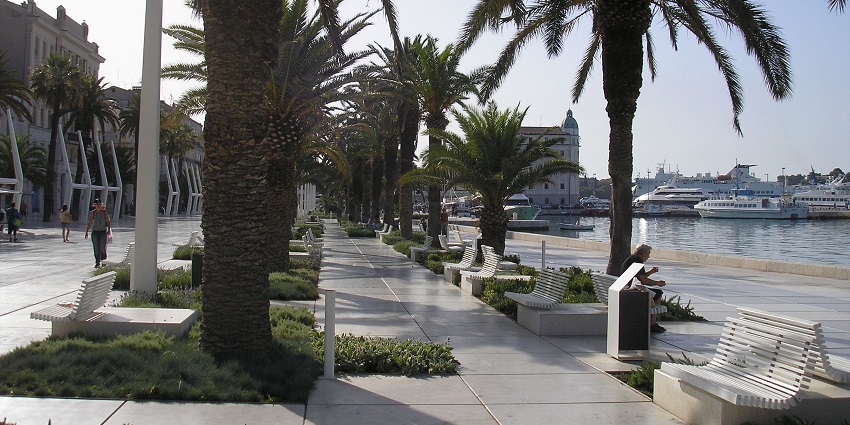
Photo: Michael Angelkovich / Wikimedia Commons
Riva Promenade is a key part of Split’s social and cultural life. This waterfront area is lined with palm trees, cafes, and restaurants, creating a lively atmosphere throughout the day. Locals and visitors come here to relax, enjoy coffee, or watch boats move through the harbour. The promenade also hosts festivals, performances, and public events, adding to its vibrant appeal. Wide walkways make it easy to explore on foot, with plenty of seating to take in the coastal views. As the sun sets, outdoor dining areas fill up, and the atmosphere becomes even more inviting.
Location: Riva Promenade, central Split waterfront, Croatia
Ideal Trip Duration: 1 – 2 hours
4. Marjan Hill
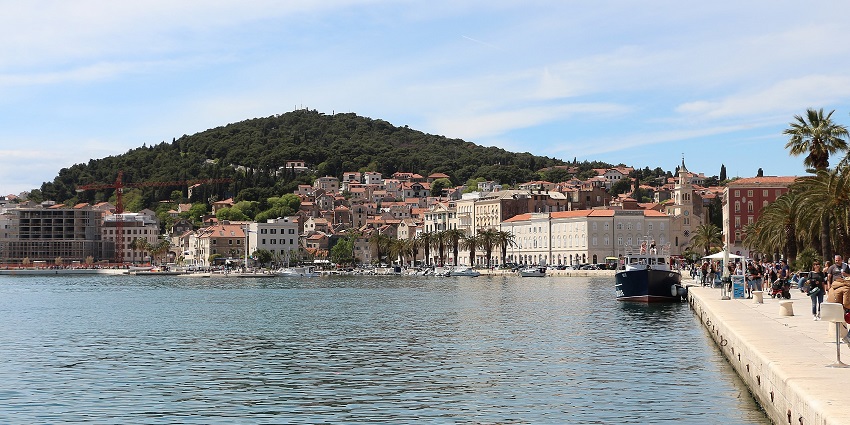
Photo: Bernard Gagnon / Wikimedai Commons
Marjan Hill, rising to 178 metres, offers panoramic views of Split, nearby islands, and mountains like Kozjak and Mosor. This wooded area has long been a place of retreat, with historic chapels and hermitages scattered along its trails. Some of these religious sites date back to the medieval period, reflecting the hill’s cultural significance. The area is also home to natural caves, adding to its unique landscape. Well-marked paths make it ideal for walking, jogging, and cycling, attracting both locals and visitors. With its mix of history, nature, and outdoor activities, it is a key tourist attraction in Split.
Location: Marjan, western Split, Croatia, Europe
Ideal Trip Duration: 2 – 3 hours
5. Bacvice Beach
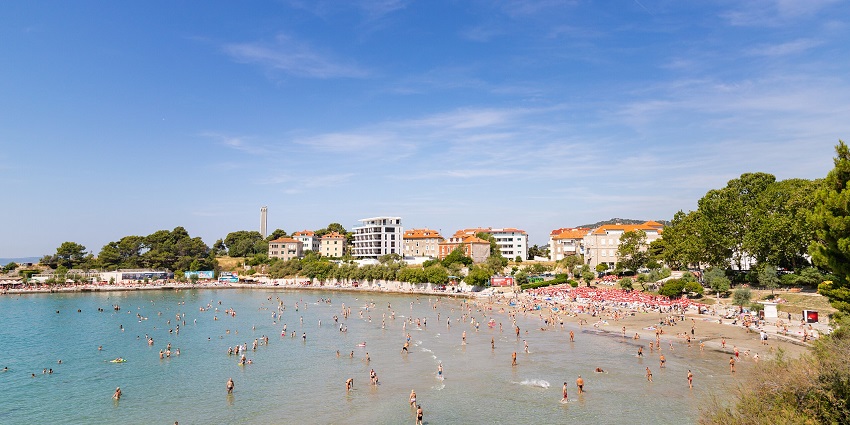
Photo: dronepicr / Wikimedia Commons
Bačvice Beach is a lively sandy beach in Split, known for its shallow waters and energetic atmosphere. It is particularly famous for the traditional Croatian game, Picigin, played in the shallows, offering visitors a unique cultural experience. The beach attracts locals and tourists, offering a perfect spot to swim, sunbathe, or enjoy the seaside. Numerous cafes and restaurants line the beach, providing various food and drinks to refresh visitors. With sunbeds, changing facilities, and other amenities available, it’s an ideal place for a relaxed, fun-filled day.
Location: Bačvice, 21000 Split, Croatia, Europe
Ideal Trip Duration: 2 – 4 hours
6. Archaeological Museum
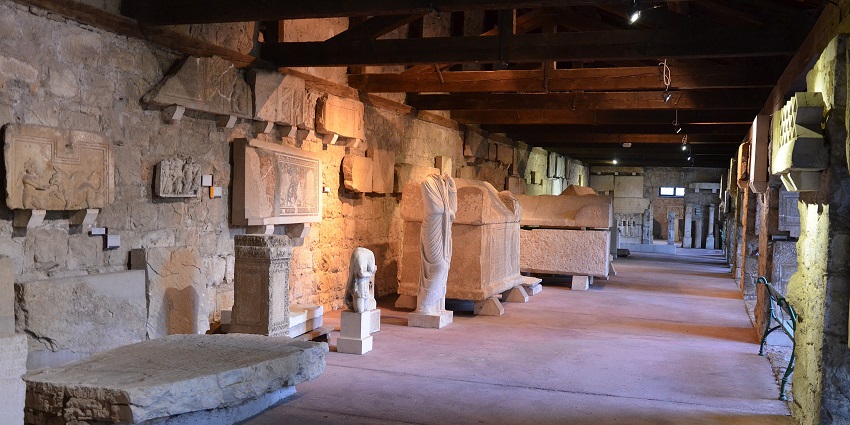
Photo: Carole Raddato / Wikimedia Commons
The Archaeological Museum in Split is the oldest museum in Croatia and was founded in 1820. It offers a deep dive into the region’s history through an impressive collection of prehistoric and medieval artefacts. The museum showcases ancient pottery, sculptures, jewellery, and tools illustrating the area’s cultural evolution. Notably, the museum also features a garden with ancient stone monuments and sarcophagi, adding a unique outdoor element to the experience. As a key tourist attraction in Split, it provides visitors with a comprehensive understanding of the region’s past, with exhibits that reflect the rich history of Split and its surrounding areas.
Location: Zrinjsko-Frankopanska 25, 21000 Split, Croatia
Ideal Trip Duration: 1 – 2 hours
7. Froggyland
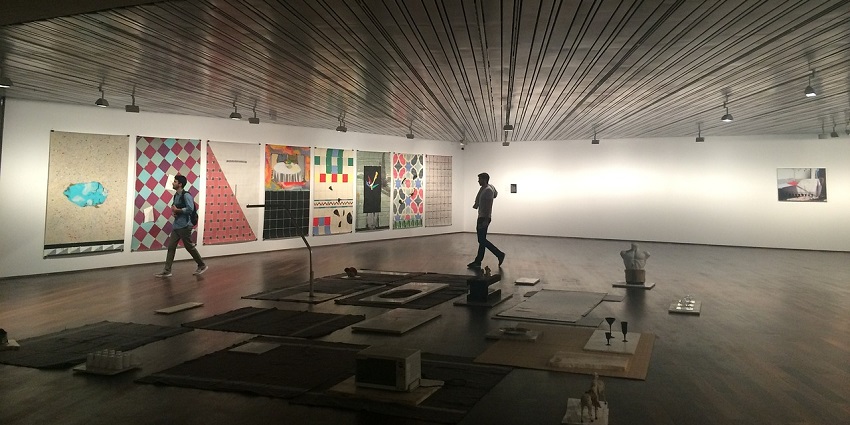
Photo: espeis / Pixabay / Image For Representation Only
Froggyland is an unusual museum featuring over 500 taxidermy frogs arranged in human-like poses. These frogs are set in everyday scenarios from the early 20th century, such as musicians, teachers, and families, displaying the art of taxidermy. The museum offers an unusual and entertaining experience, perfect for those intrigued by creative exhibits. Visitors can enjoy a unique view of taxidermy, far from the typical museum displays. The combination of craftsmanship and humour makes Froggyland a memorable stop, providing a lighthearted and educational visit. For those looking for something different, it’s an enjoyable and offbeat tourist attraction in Split.
Location: Ul. Kralja Tomislava 5, 21000 Split, Croatia
Ideal Trip Duration: 1 hour
8. Croatian National Theatre
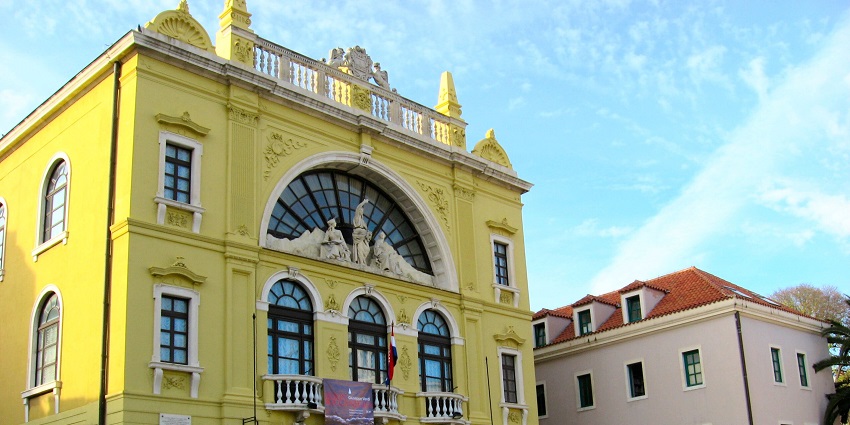
Photo: Kaiser87 / Wikimedia Commons
The Croatian National Theatre in Split is a cultural hub offering various performances, from opera to ballet and drama. The theatre was built in the 19th century and is an architectural gem with its ornate exterior and impressive interior. It hosts many local and international artists, making it one of the key venues for the performing arts in Split. As part of the city’s vibrant cultural life, the theatre also hosts festivals and events that attract both locals and tourists. It is a significant tourist place in Split, offering visitors a chance to experience the arts in a historic setting.
Location: Trg Gaje Bulata 1, 21000 Split, Croatia
Ideal Trip Duration: 1.5 – 2 hours
9. Gallery Of Fine Arts
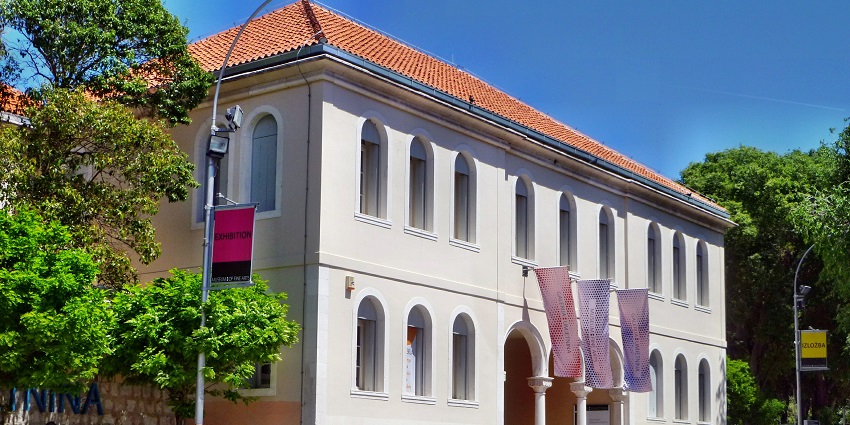
Photo: JoJan / Wikimedia Commons
The Gallery of Fine Arts in Split, established in 1931, holds over 5,200 artworks from various periods, including the 14th century to contemporary pieces. The collection showcases Croatian artists such as Vlaho Bukovac, Mato Celestin Medović, and Ivan Meštrović, along with international artists like Paolo Veneziano and Albrecht Dürer. Visitors can explore a range of paintings, sculptures, and drawings that highlight the evolution of Croatian art and its connections to broader European artistic movements. The gallery frequently hosts temporary exhibitions, offering fresh historical and modern art insights.
Location: Ulica Kralja Tomislava 15, 21000 Split, Croatia
Ideal Trip Duration: 1 – 1.5 hours.
10. Poljud Stadium
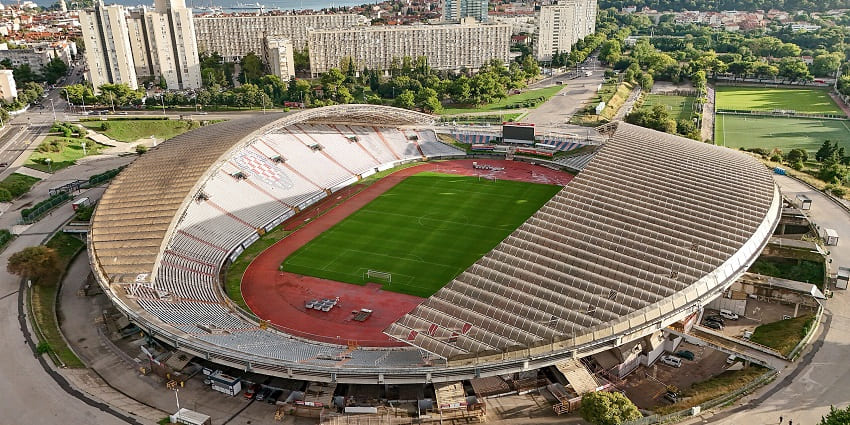
Photo: Quintin Soloviev / Wikimedia Commons
Poljud Stadium is a prominent sports venue in Split, well-known for its unique shell-shaped design. It serves as the home ground for the Hajduk Split football team, where passionate fans gather to support their local club. The stadium is also used for large concerts and events, adding to Split’s vibrant cultural life. With its distinctive look and lively atmosphere, Poljud Stadium has become one of the most recognisable landmarks in the city. It offers visitors a chance to experience the energy of Croatian football and the excitement of various events held throughout the year.
Location: 8 Mediteranskih Igara 2, 21000 Split, Croatia, Europe.
Ideal Trip Duration: 1 – 2 hours.
The places to visit in Split offer a wonderful blend of history, culture, and relaxation. Explore the ancient Diocletian’s Palace, unwind at Bačvice Beach, or immerse yourself in the region’s past at the Archaeological Museum. Each destination presents a unique view of Split’s vibrant character, offering something for every traveller. Book your trip with TripXL to enjoy the very best of this fascinating city.
Cover Photo: Tom Wheatley / Unsplash


 WhatsApp
WhatsApp
 Twitter
Twitter









